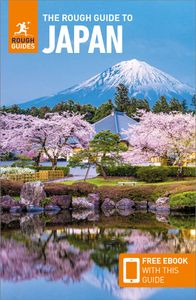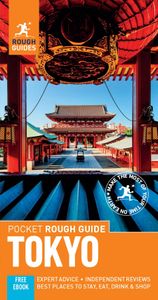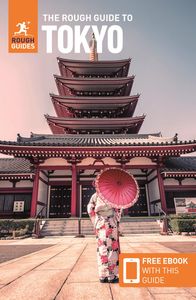Arimatsu
Dating back to 1608, Arimatsu (有松), once a town on the Tokaidō highway but now a suburb of southeastern Nagoya, is famous for shibori, an intricate and time-consuming traditional method of tie-dyeing cotton that is still practised here. One shibori kimono typically takes up to six months to complete, which accounts for the high price of shibori goods. You’ll find many shops selling them along the very picturesque street lined with prime examples of old Japanese architecture that lies just south of Meitetsu Arimatsu Station. If not for the utility poles and power lines, it could be a scene from a woodblock print – the old wooden houses with intricate tiled roofs providing the perfect backdrop to spring and autumn festivals (held on the third Sunday of March and first Sunday of October) when ornate floats are paraded down the street. Find out more about the tie-dyeing industry at the Arimatsu-Namuri Shibori Kaikan (有松鳴海絞会館).
Arimatsu can be reached directly from Meitetsu Nagoya Station (20min), but if you’re already at Atsuta-jingu you can board the train at the closer Jingu-mae Station. The ticket collector at Meitetsu Arimatsu can give you an English map of the area, although the houses are clearly visible from the station exit. One of the first of the old wooden houses you’ll pass after you turn left into the conservation area street is Kaihantei, which is also home to the delicious bakery-café Dasenka.
Around Nagoya Station
The area around Nagoya’s trio of train stations is like a mini-Manhattan with a clutch of tower blocks including Midland Square, Toyota’s headquarters. Apart from the shops, restaurants and multiplex cinema here there’s also the Sky Promenade, a partially open walkway that winds its way down from the 46th to the 44th floors of the building for a panoramic view of Nagoya.
The city’s industrial heritage is neatly covered in a couple of fascinating museums. Ten minutes’ walk north of Nagoya Station is Noritake Garden. The former factory and grounds of the celebrated china manufacturer have been transformed into a very pleasant park within which you’ll find a craft centre where you can watch pottery being created and try your own hand at painting a plate (¥1600). In a 1904-vintage brick building, the Morimura-Okura Museum Canvas reveals in ingenious ways the history and science involved in the ceramics technologies of the Morimura group (of which Noritake is a member). Elsewhere on the spacious green site there is a good café, a gallery of modern pottery and showrooms where you can buy Noritake products.
Ten minutes’ walk northwest of Noritake Garden, and close to Sakō Station on the Meitetsu Nagoya line, is the Toyota Commemorative Museum of Industry and Technology. Housed in an old red-brick Toyota factory, the museum is made up of two pavilions, one housing cars, the other textile machinery (though now famous worldwide for its cars, Toyota began life as a textile producer). In the first pavilion, rows of early twentieth-century looms make an incredible racket; in contrast, a computer-controlled air-jet loom at the end of the display purrs like a kitten. In the automobile pavilion, it’s the car-making robots, some of which look like giant, menacing aliens, that grab the attention.
Atsuta-jingū
Some 5km south of central Nagoya, amid extensive wooded grounds, lies the ancient shrine of Atsuta-jingū (熱田神宮), home of the kusanagi-no-tsurugi, or “grass-cutting sword”. This, along with the sacred jewels in Tokyo’s Imperial Palace and the sacred mirror at Ise-jingū, forms part of the imperial regalia and remains hidden deep within the shrine, which had to be rebuilt after World War II.
Within the shrine grounds there’s a small museum where you can see many other swords offered to the Shinto gods at Atsuta-jingū, including a ferocious 2m-long blade in the entrance hall. Within the grounds, look out for the giant camphor tree, said to have been planted by the Buddhist saint Kōbō Daishi 1300 years ago. It takes around twenty minutes by subway from Nagoya Station to reach Jingū-Nishi Station on the Meijō line, the closest stop to Atsuta-jingū.
Stroll west from the subway station towards the Hori-kawa, on the other side of which is the charming Shirotori Garden (白鳥庭園). This classical stroll-garden, arranged around ponds and streams, has an elegant traditional teahouse that is said to resemble a swan landing on the water.
Tokugawa Art Museum and Nagoya-jō
Nagoya’s single best sight is the Tokugawa Art Museum (徳川美術館) and its lovely attached garden Tokugawa-en (徳川園), laid out in the late seventeenth century. The museum, around 4km east of the stations, houses heirlooms from the Owari branch of the Tokugawa family, who once ruled Nagoya, and includes items inherited by the first Tokugawa shogun, Ieyasu, reconstructions of the formal chambers of the daimyō’s residence and a nō stage, around which beautiful traditional costumes are arranged, which enables you to really get a sense of the rich and cultured life led by the Tokugawas. The museum’s most treasured piece is the twelfth-century painted scroll The Tale of Genji; it’s so precious and fragile that it’s only displayed for a month each year from November 10 – the rest of the time you can see reproduced panels and video programmes about the scroll.
Three kilometres west of the museum, back towards the train stations, brings you to the moat surrounding Nagoya-jō (名古屋城). Tokugawa Ieyasu started to build this fortress in 1610 but the original was largely destroyed during World War II – all that survived were three turrets, three gates and sequestered screen paintings. A handsome concrete replica was completed in 1959, the central donjon topped by huge gold-plated shachi, the mythical dolphins that are one of the symbols of Nagoya. The Hommaru Goten (本丸御殿), the palace that once stood at the foot of the donjon, is currently under reconstruction; the first stage opened in 2010 but it won’t be fully finished until 2018. Eventually it will house Edo-era painted screens including the famous bamboo grove, leopard and tiger scenes.






















